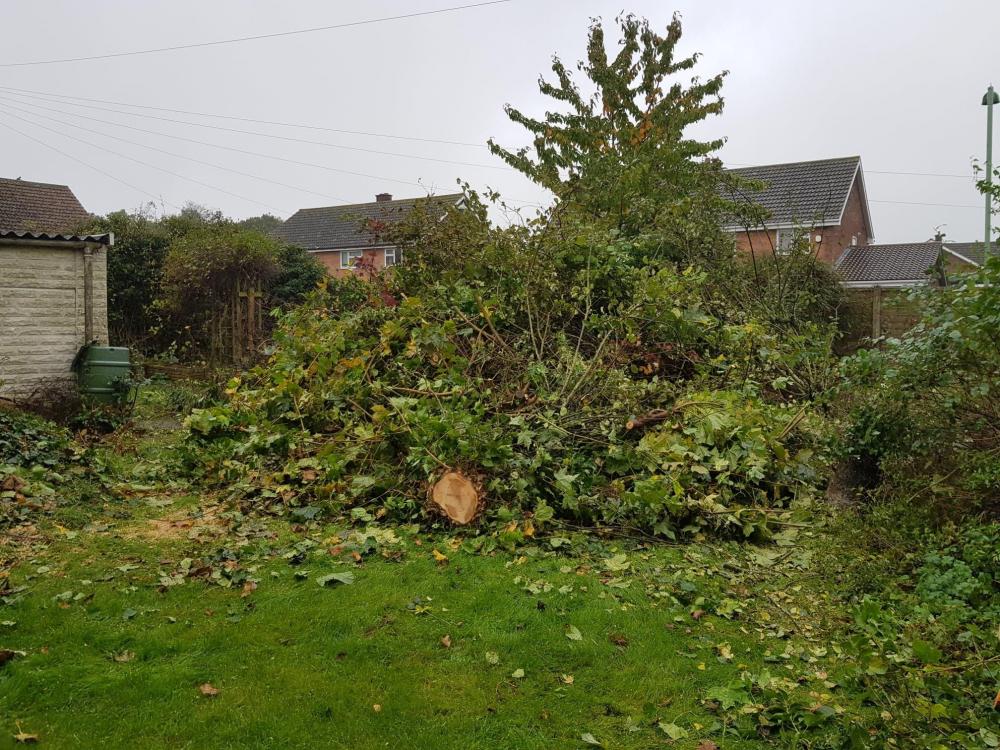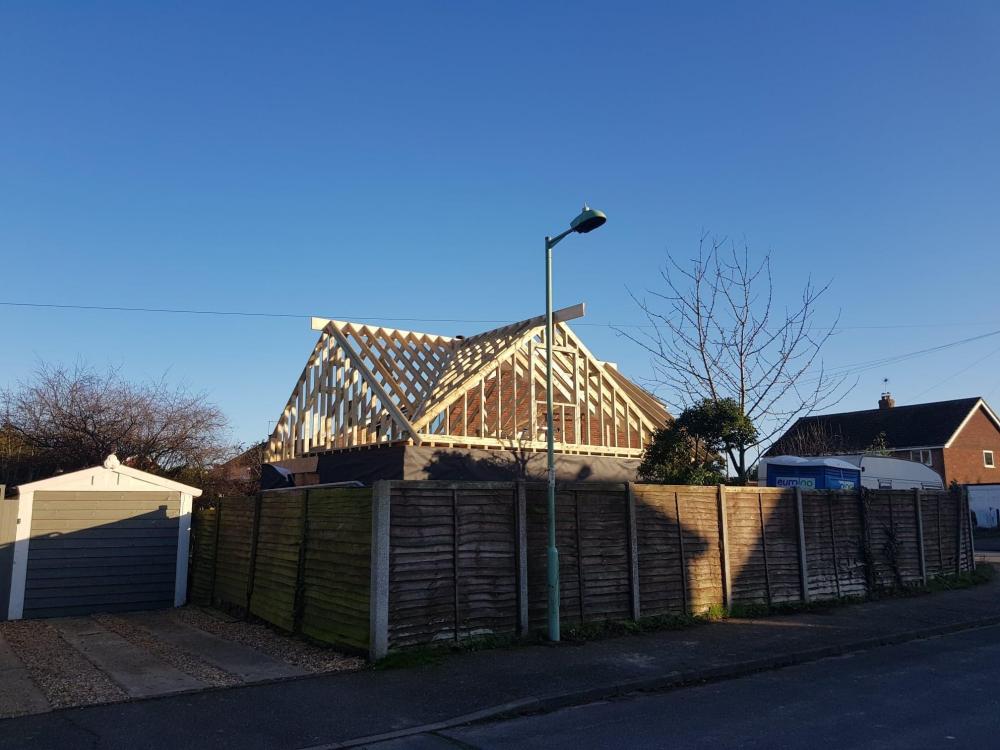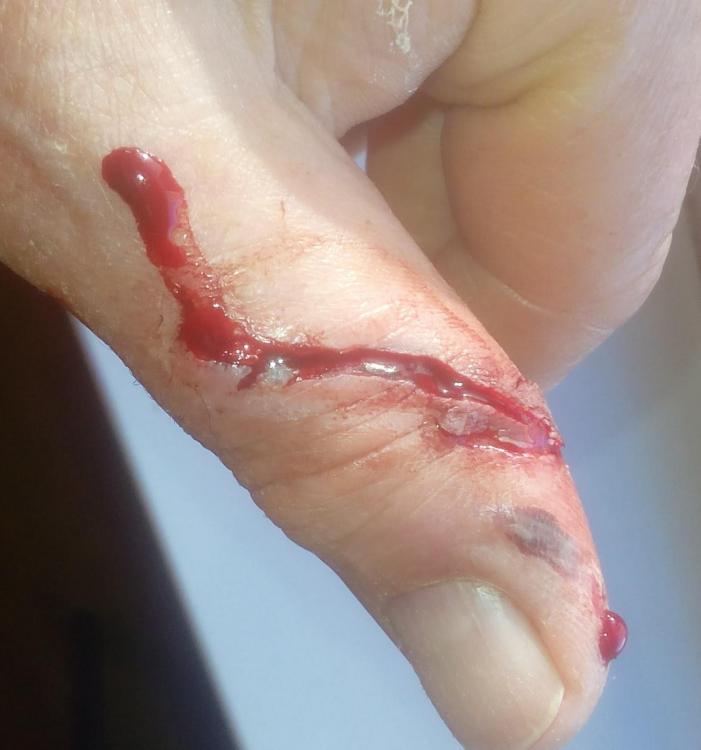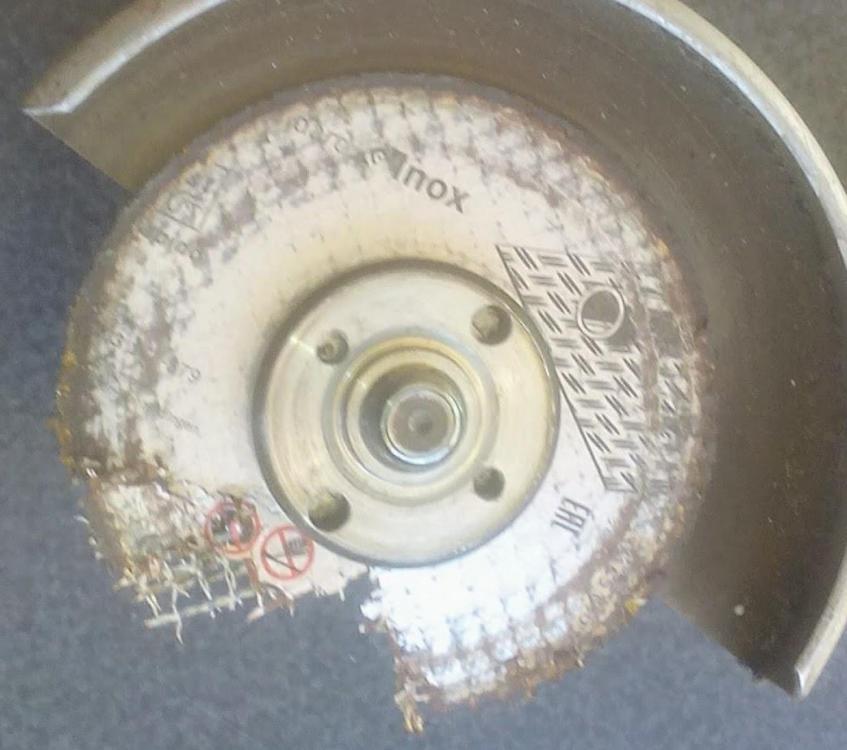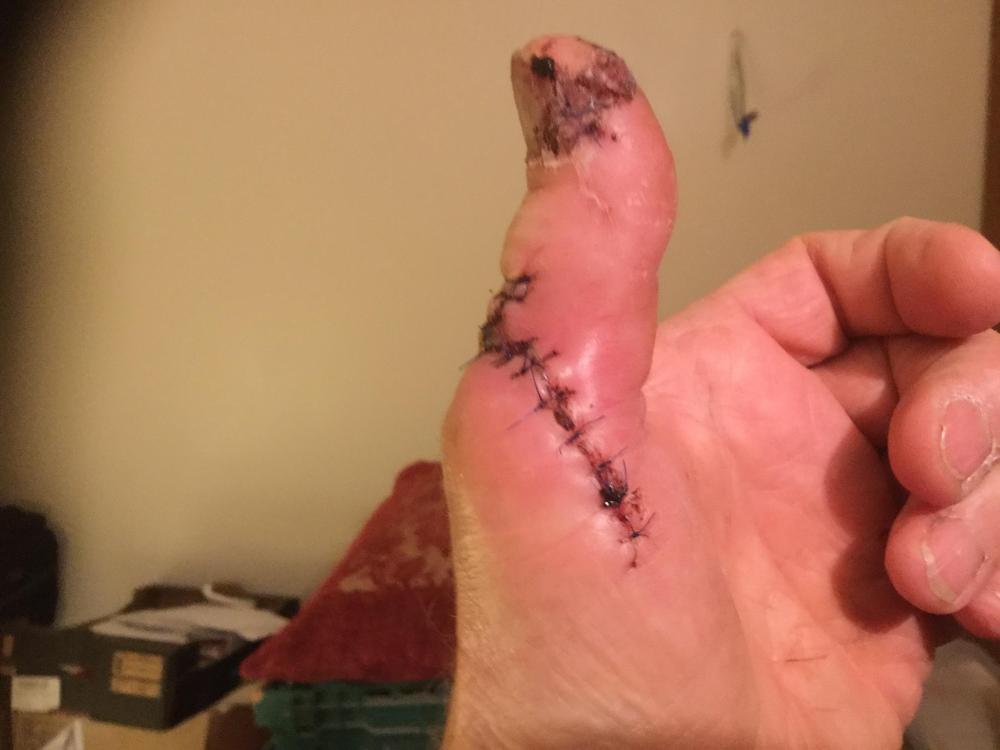Leaderboard
Popular Content
Showing content with the highest reputation on 02/02/20 in all areas
-
Thought I'd post an update along with grateful thanks to everyone who has given me advice particularly Ferdinand without whom I'd still be thinking small. (& a North facing garden instead of a South) ☀️☀️ Here we are some 20 days into the build ~ although I don't have a photo of the roof tiles on yet but I assure you they're on ~ along with the facia. Currently slightly delayed for the next week waiting for the brickies to return - we're up to window sill height so far. It's not looking so pretty right now but I'm already ? Not sure I'd be here if it wasn't for the support of the buildhub community. Thanks all.9 points
-
Well, it's been like watching paint dry today, but, with just one loop left, i think it's safe to say i have finally succeeded! WF did send me a new batch of actuators (and it's those that ive been using), but i don't think its that that's made the difference. I think the key is simply patience! But, for anyone who's interested, here's the procedure ive used: 1.Switch off flow to all loops. Then, attach and calibrate one actuator at a time, as below. 2. Attach the temp probes onto flow and return pipes 10cm from the manifold (as per instructions) and screw on actuators finger tight. 3. Power up actuators and the LED should then rapidly flash at ca. 4Hz (not 0.25Hz as stated in the instructions). 4. After just under two minutes, the LED will change to a slow blink and the actuator motor can be heard moving its pin to open the valve if its not already open. 5. After a short pause, the actuator motor will reverse to fully close the valve. 6. This is where the patience comes in. Next it opens the valve at tiny increments (not perceivable) to find the point of min flow in the flow pipe. This can easily take another 20+ mins, and its easy to think that the actuator is stuck, but don't give up! Eventually, the actuator will kick back into life and, with a slow flashing LED, reopen the valve fully. 7. Shortly after this it will move to stable operation and calibration will be complete. You can then switch off the actuator and it should close the valve fully. 8. To be on the safe side, i waited 40+ mins before switching off. Hope this helps others.3 points
-
Bit of a recurring theme , you do use goggles now, right?2 points
-
They don't need to keep changing the regulations, Part L isn't too bad. If they improved airtightness to 1.0ach and mandated MVHR it would be ok. The problem lies in the quality of the construction and the inspection process.2 points
-
This has actually made my week - especially as I am currently having a miserable couple of months. As far as I am concerned the highest purposes / achievements of BH are 3 things: 1 - If someone has a more attractive, comfortable, better designed or otherwise more satisfying house to live in than would otherwise be the case. 2 - Ditto higher quality construction. 3 - Ditto more energy efficient. 4 - Ditto quality of decisions. 5 - Keeping more sane / balanced / thoughtful / less stressed throughout. It really can make one plus one come to three. Thanks @simplepimple. Such comments make what time we all put in in our various ways worthwhile imo.1 point
-
Thanks @Archer. I hadn't seen Quickbase. Had a quick look. Says "lightweight foundation system for conservatories and lightweight structures". I will drop them a line to see what "lightweight" means.1 point
-
I would love to, but i can only just post on here. At school we didn't have a single computer, and (my own fault) i just never got into them when they came out. Wish i had now, but i have always prefered actual tools, and hand stuff.1 point
-
Why not put a small section of electric ufh in shower room and a heated towel rail, nothing worse than a damp towel or a cold floor when getting out of the shower. The rest can be added if needed as long as you install extra power points, an oil filled rad on a timer should keep it warm enough.1 point
-
As @Ferdinand says, one with at least two sharp teeth! The general consensus was that it was probably an adder, as grass snakes don't usually bite. The inflammation that followed also tended towards that view, in that the adder is our only venomous snake, and the inflammation seemed to proceed very quickly. That photo was taken within a few minutes of the bite, and the puncture marks are already showing early signs of inflammation. Within a couple of hours the finger was the size of a small banana, and pretty painful.1 point
-
I think one of the most painful things I suffered during our build was getting bitten by a snake when shifting stuff in the overgrown area that is now our garden. I took this 'photo a few minutes after it had bitten me (through a glove) and before the finger started to swell up : The nurse who treated it later that day thought that it was probably the fact that I was wearing gloves that saved the bite being worse. It was still as painful as hell for a day or so, though. No gory 'photos of the finger when it was swollen, I'm afraid.1 point
-
I bought my ASHP on Ebay fir £850, which was a punt but well worth it. I had to source a programmer but frankly not touched since installing it!!!,, (£250). A buffer tank (questionable but does have an immersion in case of ASHP breakdown), i installed it all myself over a couple of days but frankly could have done it in one day and I am not a professional plumber. Electrics were a bit difficult as I designed the set up myself?. A changeover valve and a few odds and sods. I am thinking of installing timers as I might go E7 in the future. Diagrams for what to instal are ready available and a wealth of knowledge here on the forum about the best way to go.1 point
-
The extra "stuff" is just the same as for a normal system boiler. A couple of motorised valves, a pump perhaps, and if like us you did not want to use the programmer supplied with the ASHP then a conventional boiler programmer. Heat pumps work different to system boilers, they only ever heat DHW or space heating, never both together. This allows them to run at a different target temperature for heating and a higher temperature for DHW. I run mine direct to the UFH without issue. Some say you should fit a small buffer tank. You need to look carefully at whether it is worth going for an MCS install and claiming the RHI or going for a cheap install and not bothering. I bought a cheap ebay ASHP and self installed it though that was not without it's problems (the first one they supplied was faulty and I had to kick up a stink to get them to replace it)1 point
-
So perhaps manually forcing a recalibration one at a time with others off, rather than all at once might help?1 point
-
I was about to post something to that effect. This is where grid scale storage is needed if we are ever going to get to a zero CO2 electricity grid. But electricity generation can never be negative CO21 point
-
@Ferdinand looks a useful orientation, I guess you get some afternoon sun when it's higher in the sky, and not directly on to the wall you're planting, that's good if you wanted to try some veg, I'd stick with the wall idea for things that don't need too much root space and can be replaced fairly often, then get a small veg trug to sit under it https://www.primrose.co.uk/vegtrug-wall-hugger-small-103cm-46cm-h80cm-p-97637.html?cPath=734_737_12407 I can't grow anything except tomatoes in mine in the summer, but I'm kicking myself into action now by sowing an indoor window box with rocket this afternoon! thanks for the idea and it's lovely to be able to post something on this site in return for all the useful info everyone has given me in connection with my garage disaster focussing on the positive, my attached neighbour is building a massive extension that puts a brick wall immediately outside my conservatory, as I am not like you clever lot on here and can't do it myself, I got my fencing chap to build a sort of 'pergola' last week so I can grow a 'green wall' of my own (great minds thinking alike) the idea is to put planters on the gravel base and grow climbing things, starting with peas, up canes, and to hang baskets from the top trailing down, there are some super cherry tomatoes you can grow in baskets, roll on summer!1 point
-
1 point
-
You’re dead right about lack of insulation in a static, I spent most of two winters in mine ?. With a Couple of fan heaters I think you will be fine. Good idea about the vent axis MVHR and a daughter not far away?. Get a good duvet and electric blanket, it saved the day for me.1 point
-
That's entirely the problem with this “net-zero” thinking: exporting to the grid does not sequester anything (unless excess power in the grid is used for carbon capture, which it isn't); it might reduce other people's emissions, which is of course a good thing, but it doesn't counteract the emissions you cause at other times. If the country was made up completely of houses just like yours then there'd still be emissions.1 point
-
1 point
-
We have the same type of manifold thermometers and they are hopelessly inaccurate. I tried to find more accurate ones that would fit the ports in the manifold but failed miserably. My first solution was to buy some of these cheap digital thermometers and poke their sensors into the holes in the manifold: https://www.ebay.co.uk/itm/Mini-Digital-Fridge-Freezers-Coolers-Chillers-Aquarium-Thermometer-Probe-Sensor/333389376769?hash=item4d9f8e2d01%3Am%3AmCniJn-0tAsdFCUJGopbXZg&LH_BIN=1 but I found that these stick on LCD temperature indicating strips were easier to fit, although they are harder to read: https://www.ebay.co.uk/itm/Stick-On-Digital-Thermometer-Adhesive-Aquarium-Fish-Tank-Glass-Water-Window-LCD/182082101146?hash=item2a64f05f9a%3Ag%3AJ8oAAOSwuolboq37&LH_BIN=11 point
-
The airtightness is key, I think. The trouble with small volumes is that it doesn't take much of a leak to get a high air-change rate: area proportional to L², volume to L³, etc. Personally, I'd prefer to avoid all combustion in that size space [¹] though I was glad of LPG for hot water and cooking when I was staying in a static caravan during a 36-hour power cut at a time of high winds and sleet showers. [¹] In any size space, really, but particularly a small one.1 point
-
The spare router I set up as an AP yesterday is working like this. It works OK, but is a bit bulky, and being old it draws a fair bit of power and runs a bit warm, plus it's only a 54 Mbps unit, it's that old. At the moment it's connected to the kitchen TV Ethernet cable, which is OK as the switch in the thing has four ports. I set this up so that DHCP was disabled in the one being used as an AP, with both the main router and the one being used as an AP having the same SSID, security credentials etc, and with both set to the same fixed 2.4 GHz channel (11 in my case, as it seems free from any other traffic). I set the router used as an AP to a fixed IP right near the top of the subnet, and then limited DHCP in the main router to not allocate IPs that high. This works seamlessly, with devices just switching from one AP to another without any noticeable break. I think the best solution might be for me to look at getting one or two decent APs that include a small switch, maybe 2 to 4 ports, and see if I can use them where we already have wired Ethernet. I'll need APs with built in Ethernet switches so that we can continue to have the wired devices connected (a couple of TVs that work a lot better with a wired connection). With hind sight I should have run at least a couple of runs of Ethernet cable to each place I thought we might need it, rather than just a single run. I already have a 16 port switch in my study, which is where all the network stuff terminates. It is staggering just how many connected devices we've accumulated, though. Just in my study I have four PCs, a Raspberry Pi monitoring data from my car with TeslaMate (and running PiHole to bin adverts), an Odroid HC1 running a couple of Tb of network storage and a network printer, all on Ethernet connections. Then there are two TVs and my wife's iMac, also on Ethernet connections, plus at least six WiFi devices, a couple of internet radios, my wife's iPad, my Android tablet, my laptop and my car. At any one time it seems we usually have between 10 and 12 devices active on the LAN, whenever I do a scan.1 point
-
1 point
-
Duct the CAT6 but you could just Use cheap 25mm rigid conduit or even 32mm waste pipe but run a pair of CAT6 just in case ....1 point
-
Took the top inch of my index finger off with a Stanley knife. Dr Angel (I kid you not) sewed it back on. I have feeling in it, but it is bent, and it feels like somebody else's finger. Shot myself in the leg with a nail gun. 24 hours in hospital gettting it dug out, as it had gone into the bone. The funny part was that it was Saturday night, and when i was wheeled into the hospital, i got a lot of looks because the ambulance guy shouted "Got one here, shot in the leg", as he wheeled me in. Stanley Knife again while plasterboarding. Slid it down my hand and needed 22 stitches. Old bit of plastic stuck in my eye when doing a bit of demo with no goggles on. It sounds like a lot, buy i have been renovating each house i have owned for 30 years. Forgot , i had a saw blade tooth come off a table saw i was using, with no guard, that went deep into my shoulder. no goggles on then either, so i consider myself Lucky Jim.1 point
-
Data and power cables should be separated in a trench by at least 100mm, according to the info that SSEN and Openreach sent me. The data cable is best put in a duct, I think.1 point
-
In 2016 I built a small holiday home in Wales to minimum building regs. The EPC is C71 and the EI is B81. It is timber frame construction with timber weatherboarding. The area weighted average U value for walls roof & floor is 0.15 and windows are 0.8 (3G). No renewables and it’s heated by bulk LPG. We’ve been using the building for 3 years now and the average annual LPG usage for all hot water, heating & cooking has been 475 litres at an annual cost (excluding standing charge) of £155. To put that figure into context our annual Council Tax Bill is £1,870.1 point
-
I think you may be looking for the heat pump version of air con unit which works through a single penetration where both pipes go through where all the gubbins is inside.the property and no External unit. @PeterW has some knowledge, but essentially they are an air con or heat pump which sits inside your room and has a single outlet for both pipes and no external unit. Think you are into 1-2k but there is little alternative. Unico Easy is one model I think. I am planning one, but I think @lizzie may have done one already. I plan to fit one in my S facing lounge to manage summer overheat if I keep the current house after probate for mum etc is done and I buy other family out. We touched on them in passing on this thread:1 point
-
I would try something like a fan heater or two. Most have stats built in and can be used in timers. Just be careful not to cover them.1 point
-
... And a susquent attempt at amputating a third ..... but the angle grinder came off worst .... And this is what's left on each hand - just 4 ... i.e. 8 in total A slightly mischevious post: I suffer from Dupuytrens Contracture 'You god it good and proper - ya got it bad, lad ' said the surgeon as he marked up my finger for amputation. Trouble was that he was marking up the wrong finger for amputation. Oh how we laughed together when I pointed the error out It (the amuptations) still occasionally hurt like buggery for a few instants ( feels like a simple stab with a sharp object) and then nothing - no after-pain, no hint of redness, nothing. Wierd.1 point
-
Instead I get that 48kWh from an ASHP which on my single rate tariff of 14.183p per kWh and assuming a COP of 3, costs me £2.36 There is indeed a good case for direct electricity on an off peak tariff, but you do need a floor capable of storing that much. I doubt my timber floor / biscuit mix would. You really do need a decent concrete slab.1 point
-
My technique on renovations is to pre-install ducts and pullcords to where I know where I want them to go, to small 'mini cupboards' in the wall. So they do not have to drill any holes at all, and my way is easier. I put them in when I do the underfloor insulation. if necessary I would bung them £25 as well. Too important not to have holes being drilled through my beautiful renovation. Outside I run them under loose gravel borders and paths eg along a French drain. F1 point
-
Virgin employ some of the worst “engineers” I’ve come across ... Expect them to lay a duct 6-9” deep in your lawn, and then also drill at least 2 or 3 holes through the wall for them to route their cables. All internal boxes will be surface mount only, usually in the most visible position.....1 point
-
Never heard of open web joists sagging - they are usually well specified and over engineered. The issue is normally when they aren’t being used as designed and additional loads have been added or the ends have not been restrained correctly. I prefer open web but they are sharp on the edges so you have to be careful with pipes and wires. The downside with I-joists is that you can get trades putting holes in the wrong place as there are very strict rules that are provided with the products. Sadly, some trades can’t read ....1 point
-
0 points
-
0 points
-
0 points
-
There are probably already good designs for doing just that on some of the alternative hydroponic growing sites. . .0 points
-
OMG why did I look at this? why don't I stick to garage disasters & green walls of herbs? YOU ARE ALL COMPLETELY NUTS!!!!0 points
-
ah yes, done that, holding a stud frame with my hand and a nail fired from a paslode turned 90’ in the wood when it hit another nail straight through a finger, I pulled it out with pliers and carried on. My mate said should I go to hospital but I explained that doctors knew nothing about nail guns ????0 points
-
Had an argument with a piece of cement board a while ago. Heavy stuff, fell back on me. Also fell down the stairs 3 weeks ago while cladding wall with birch ply. No idea I had done so much damage until the following day. No fracture but soft tissue & vascular trauma. Lots of swelling & bruising & lost blood supply to toes Crutches & keeping leg elevated for 2 weeks. Got infected & needed dressing every day for 2 weeks. Healing now but will be 6 to 8 weeks before completely healed. Fun this self building lark.0 points
-
25 what a weird amount for a drink!?0 points
-
I whacked my little finger with a hammer, x ray showed the end bone in 9 pieces, they wanted to refer me to a specialist, but what could he do.? (Never went back and end of finger slightly bigger than the other one.) worst one was using an angle grinder with a wood carving blade (circular saw blade), unlike circular saws they don’t have a retracting blade guard so I took it easy, did my cut using both hands and went to put it down with my left hand and I have arthritis in my left thumb, thumb let go, flex around my wrist so when it fell it turned back on my thumb nearly severing it from my hand. I cut through loads of neves and two tendons, they managed to sew it back on but I have almost constant pain and reduced mobility. Lesson learnt, let blade stop before putting power tools down. (I have another photo of them trying to find the ends of the tendons but resisted as its lunch time)0 points




